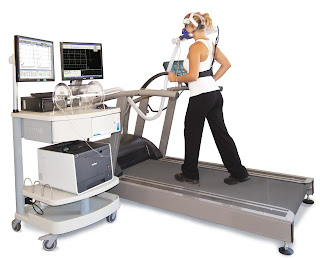Basic Examination of Treadmill Test (Treadmill Stress Test/Cardiac Stress Test)
ECG can record the presence of ischemia of the heart muscle. Ischemia of the heart muscle that means not enough blood flow towards the heart muscle. Ischemia occurs due to constriction of the coronary vessels due to the plaque. But ischemia also depends on the balance of supply and demand. Supply or less flow will not cause ischemia when the demand or need such a low heart muscle at rest. That's the reason why ECG while lay often do not show the description of ischemia, although there's been a narrowing of coronary flow.To increase the demand, given the workload against the heart by way of the patient requested walk on treadmills, while instruments recorded ECG. With the increasing demand, if indeed there's been a decrease in coronary flow i.e. supply the narrows, then it would seem the image of ischemia on ECG recording. This is a basic inspection of the treadmill test.
The purpose of The Examination of Treadmill Stress Test
Many patients, probably including you, who asked, “How do I detect coronary heart disease as early as possible?”. One of the easiest, inexpensive, and relatively safe is a treadmill test. This is the main objective, namely the treadmill test/ Treadmill Stress Test to detect coronary heart disease early.Although the level of accuracy is not 100% (just over 70%), a treadmill test is the most common examinations conducted by a cardiologist for the detection of coronary heart disease.
In patients with heart rhythm disturbances, cardiologist will also perform a treadmill test to assess whether the perceived grievances related to heart rhythm disturbances, or not.
Treadmill stress test are also performed on patients under the care of heart attacks, to assess the level of risk for experiencing acute coronary events in later life and specify further handling. Also treadmill test to determine the level of activity that can be done after the patient had a heart attack.
Examination Preparation
Treadmill stress test/treadmill test does not require special preparation. In general you do not perform this test in an empty stomach, but do not also fit the new meal. Give a distance of about 2 or 3 hours from last feeding. On the day performed treadmill test should be in a condition fit, don't smoke, drink coffee, or alcohol.
The drugs that you are drinking, unless there are specific instructions from the doctor, keep your medications as usual. You must report to the doctor all over your condition and medication for this. The doctor will adjust the inspection protocol when necessary to adjust with your condition.
Generally in each hospital are provided special clothes and shoes for the treadmill test. When you feel more comfortable using your own, bring a loose clothing, and sports shoes. You'll be plastered 10 electrodes on the chest and your stomach. If your chest hair a lot, maybe the nurse will ask permission to shave, or sticking of the electrode with the plaster that will be a little bit painful when unplugged.
Long snapping is starting from the overall test electrodes, tests, and for the removal of the electrodes back, usually no more than half an hour. The longer you walk (or run) usually depends on the age, and your fitness level. When you are young, healthy, and diligent exercising, you may be able to reach more than 12 minutes. When it is diseased coronary artery disease, probably only 1 – 2 minute test recording ECG changes appears already.
Here the best cardio treadmill that i recomended >>>>
